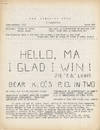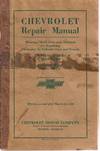

MANUSCRIPT JOURNAL OF ENGLISH WOMAN'S CONTINENTAL TOUR BEGINNING IN WALSGRAVE NEAR COVENTRY (1863-4).
by 19th Century Woman Traveller
- Used
- Hardcover
- Condition
- See description
- Seller
-
Leeds, West Yorkshire, United Kingdom
Payment Methods Accepted
About This Item
Florence: Unpublished, 1863. A comprehensive manuscript journal of an independent and adventurous English woman's Continental tour, including lengthy stays in Florence and Rome before continuing to Slovenia, Vienna and Prague. PHYSICAL DESCRIPTION: Quarto format, full black roan, single blind ruling to boards. Boards with gentle edgewear. All edges marbled; cream endpapers, darkened by binder's glue, front inner hinge starting, rear sound, Charles Benson's attractive book label, plus pencil notes (in another hand) to front pastedown, 'Sonnet of Leonardo da Vinci' copied in brown ink to flyleaf, further pencil quotations, in author's hand, to verso and rear endpapers. 92 leaves - 184 pages - ruled paper; no pagination, entries dated (10.10.1863 through 26.07.1864), made almost daily, 12 blank pages to rear, making 172 pages of text (of 184), c30,000 words. Script, in varying shades of brown ink, in an often difficult hand, occasional pencil annotations and pencil script evident underneath ink, very occasional splodges and crossings-out. Gently toned, occasional fox spots. Clean and bright. Departing from Walsgrave Vicarage, near Coventry, the author travelled to Canterbury and on to Paris, Lyons, Marseilles, by train, then by boat to Genoa and Leghorn (Livorno), and, finally, to Florence, where she settled for the final months of 1863. She often travelled alone, it seems, and detailed the particulars of journeys, a number difficult: whether transported by ladies carriage or boat, coupé or 'car,' pony or horse, she kept note of the weather and temperature, and had an eye for landscape and place. In Florence, the author sketched daily in the Boboli Gardens, visited galleries and churches, and took singing and Italian lessons, as well as sight-seeing locally, visiting Vallombrosa Monastery (via 'car,' a lame horse and a cart driven by a pair of white bullocks) and Siena, including the Liberia Piccolomini bedecked with Pinturicchio's frescos, "bright as new tapestry". She had an active social life, seeing other British and Swedish temporary residents often, including the Ashwells and Smyths, Mrs Duncan, the Misses Bell and Williams, and Countess Löwen. At the turn of 1864, the author travelled to Rome, via a rough and sickening passage from Leghorn to Civitavecchia, where she stayed for three months; a number of her acquaintances appear to have relocated south too. Again, her activities focused around art and culture: she visited artists' studios, included Mr Frey's (likely Johan Jacob Frey, 1813-1865), to whom she showed her sketches, visited galleries and museums, and continued to sing and attend church. A dedicated journal keeper, lengthier entries are textured with discussion of significant Renaissance paintings, sculptures and buildings, made vivid with the help of her glass or lorgnette, and later by descriptions of the natural phenomena she visits. National-political tensions feature sparingly, one rare example being an "affray" between French and Italian soldiers, leading to "the death of 4 Italian soldiers & the wounding, by sabre cuts, of 10 French ones". From Rome she travelled via coupé back to Florence, via Terni and Assisi, where she stayed for a month, before touring Ravenna, Parma, Ferrara, Padua and Venice on her final Italian leg. She then took the train to Adelsberg (Postojnia), Slovenia to visit its famous Grotto ("the most unearthly and appalling part was the great dome"). Finally, she travelled to Vienna, Prague, Dresden, Berlin, as well as ascending, via pony, to the Kuhstall arch. The journal closes with its keeper's arrival back at St Thomas' College, Canterbury. In 1863-4 the incumbent of Walsgrave Vicarage was Robert Arrowsmith, who resided with his sister Beatrice. The author corresponded with the siblings regularly during her tour, referring to them by their first names and receiving family news. The connection with St Thomas' College, Canterbury is not clear. Please contact Christian White Rare Books Ltd for more information or images of this item 1863
Reviews
(Log in or Create an Account first!)
Details
- Bookseller
- Christian White Rare Books Ltd.
(GB)
- Bookseller's Inventory #
- 8575
- Title
- MANUSCRIPT JOURNAL OF ENGLISH WOMAN'S CONTINENTAL TOUR BEGINNING IN WALSGRAVE NEAR COVENTRY (1863-4).
- Author
- 19th Century Woman Traveller
- Book Condition
- Used
- Quantity Available
- 1
- Binding
- Hardcover
- Publisher
- Unpublished
- Place of Publication
- Florence
- Date Published
- 1863
- Bookseller catalogs
- Manuscript;
Terms of Sale
Christian White Rare Books Ltd.
30 day return guarantee, no quibble with full refund.
About the Seller
Christian White Rare Books Ltd.
Biblio member since 2013
Leeds, West Yorkshire
About Christian White Rare Books Ltd.
Christian White Rare Books buys and sells books and manuscripts in the best condition we can find them. We love manuscripts, annotated books and association copies. We serve collectors of all ages, means and taste, and have built relationships with libraries and librarians in the UK, the USA and across the world. We all need books!
Glossary
Some terminology that may be used in this description includes:
- Leaves
- Very generally, "leaves" refers to the pages of a book, as in the common phrase, "loose-leaf pages." A leaf is a single sheet...
- New
- A new book is a book previously not circulated to a buyer. Although a new book is typically free of any faults or defects, "new"...
- Hinge
- The portion of the book closest to the spine that allows the book to be opened and closed.
- Quarto
- The term quarto is used to describe a page or book size. A printed sheet is made with four pages of text on each side, and the...
- Edges
- The collective of the top, fore and bottom edges of the text block of the book, being that part of the edges of the pages of a...
- Verso
- The page bound on the left side of a book, opposite to the recto page.


